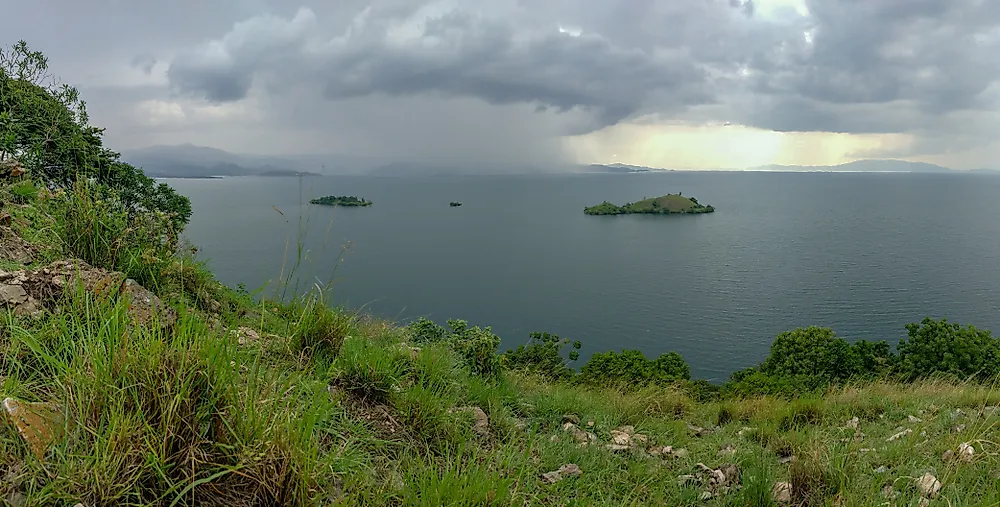What Is A Mazuku?

Mazuku is a geology term used to refer to a toxic pocket of air rich in carbon dioxide. The term mazuku means “evil wind” in Swahili and is commonly used in areas bordering Lake Kivu to describe areas where mysterious deaths occur due to the release of toxic amounts of carbon dioxide into the atmosphere. It is believed that the term originated due to the local communities associating the phenomenon with evil spirits. Mazuku are common in areas bordering the northern shore of Lake Kivu on the DRC-Rwanda border and in Cameroon’s Lake Nyos and Lake Monoun.
Occurrence of Mazuku
Mazuku are formed in depressions where carbon dioxide accumulates low near the ground by gravity since it is heavier than air. Usually, exposure to concentration levels above 10% is considered lethal to human and animal life. Mazuku often contains much higher concentration levels of carbon dioxide (between 15% and 80%) with victims dying within moments of exposure. Geological isotopic analyses finding show that CO2 comes from Earth’s Upper Mantel. The CO2 then accumulates in morphological depressions which are formed at the foot of lava flows through the superposition of the lava flow. Mazuku can also be found in depressions where there are collapsed lava tunnels, cooling fractures, and open faults that allow gas to the surface.
Mazuku in Lake Kivu, Nyos and Monoun
Lake Kivu, Nyos, and Monoun have massive quantities of CO2 trapped below the depths. Naturally occurring geological events can then cause the trapped carbon dioxide to escape to the surface thus endangering the lives of those living nearby. Field studies have also found that atmospheric pressure, rainfall, solar irradiance, and wind also have a significant influence on gas concentration in areas where mazuku are prevalent. The field findings are supported by other studies in the open air and subsurface of the mazuku which have found daily variations in gas concentrations.
Deaths as a Result of Mazuku
An estimated one hundred people die annually in the areas bordering Lake Kivu due to exposure to toxic levels of carbon dioxide. These deaths usually occur at night especially when people sleep near the ground level. The fatalities recorded along Lake Kivu are however dwarfed by those recorded in Cameroon where on August 21, 1886, 1700 people and 3,500 livestock were killed at Lake Nyos when about 100,000 and 300,000 tons of CO2 were released to the surface (other accounts put the estimated carbon dioxide release at over one million tons). Carbon dioxide (being naturally heavier than air) swept through the villages in the low-lying river valley causing severe casualties. On August 15, 1984, another lake in Cameroon, Lake Monoun, released vast amounts of carbon dioxide suffocating 37 people after limnic eruptions.
Mitigating the Effects of Mazuku
Following the tragic events at Lake Nyos, large polyethylene pipes have been sunk into the lake, a process called degassing, to reduce the amount of concentrated carbon dioxide at the bottom of the lake. Similar preventative measures have however not been undertaken in Lake Kivu which is estimated to have even higher amounts of concentrated carbon dioxide and methane in the depths of the lake. It is hypothesized that a limnic eruption in the lake would potentially lead to about two million deaths along the densely populated shoreline.
Scientific Applications from the Study of Mazuku
The study of mazuku has led some scientists to suggest the storage of liquefied carbon dioxide produced by power plants in the depths of the ocean to slow global warming. This idea has however been criticized as it may lead to outgassing (when the gas escapes to the surface) as observed in mazuku. Environmentalists have also condemned it as an irresponsible attempt to bury away the earth's troubles instead of seeking a sustainable solution to global warming.











